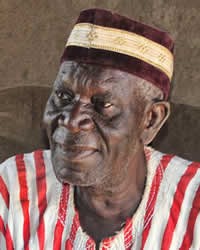Safaliba, Safazo in Ghana

Photo Source:
Anonymous
|
Send Joshua Project a map of this people group.
|
| People Name: | Safaliba, Safazo |
| Country: | Ghana |
| 10/40 Window: | No |
| Population: | 10,000 |
| World Population: | 10,000 |
| Primary Language: | Safaliba |
| Primary Religion: | Islam |
| Christian Adherents: | 10.00 % |
| Evangelicals: | 7.50 % |
| Scripture: | Portions |
| Ministry Resources: | No |
| Jesus Film: | No |
| Audio Recordings: | Yes |
| People Cluster: | Gur |
| Affinity Bloc: | Sub-Saharan Peoples |
| Progress Level: |
|
Introduction / History
The Safaliba people reportedly came from an area in today's Cote d'Ivoire and settled in an area of about sixty square kilometers around what is now Mandari near Bole in the Northern Province of Ghana. Later on the Gonjas arrived in the area and the Safaliba surrendered to this more numerous and powerful people group. Due to this peaceful submission the Safaliba were allowed to retain their chieftaincy alongside the Gonjas' and the Gonjas do not ask any taxes from the Safaliba and cohabitation is friendly. The Safaliba also have continued to settle their own cases for their own people.
The Safaliba's main subsistence is farming, mainly of yams, cassava, millet, corn, and groundnuts. They are also involved in shea butter extraction. Their houses are rectangular with flat mud roofs and intricate designs imprinted on the walls. Several houses are joined together and create a fortress-like impression. Access to the roof is gained by means of a beam with cut out steps.
The influences of traditional religion and Islam are present, but the Christian churches are on the rise. There is a great openness to Christianity among the Safaliba, and the churches are growing in all age groups. The Roman Catholic Church has the main Christian influence in the area, but there are also a few protestant churches. The churches are still very young, there are no church buildings in the four Safaliba villages. The openness to Bible translation is great as well. Language surveyors have encountered ready cooperation. The authorities are welcoming and cooperative.